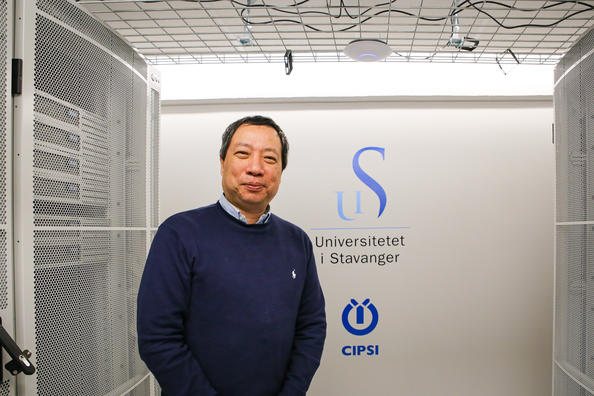University of Stavanger is participating in two new research projects led by NORCE. Together the partners seek new solutions for computing technologies; 3D machine vision and automated well monitoring.

Professor Chunming Rong's research group at Department of Electrical Engineering and Computer Science were recently granted two projects from the Research Council of Norway. University of Stavanger is partner, while NORCE is leading the projects.
About the projects
Next Generation 3D Machine Vision with Embedded Visual Computing: The overall objective of this research is to give up the currently manual and time-consuming operational processes with well-composed digitalization using real-time 3D vision and learning processes. This research aims to initiate an automated process deploying high-precision 3D sensing and online visual learning engines that operate in natural environments and are able to adapt in a holistic lifetime manner to changes during operations.
It targets establishing a groundbreaking technological concept for 3D machine vision as an interdisciplinary initiative linking cost effective and reliable depth sensing with advanced computer vision and embedded artificial intelligence to tackle challenges posed by time-varying visual scene perception in natural environments.
This research has a potential to a radical change in many parts of the value chain in the industry and society and selected scenarios will be designed for impact evaluation and opening up integration opportunities.
UiS will lead one of the work packages in the 3DSmartCam project: What are the capabilities and performance of the new 3D machine vision for digitalization of services and processes?
Automated Well Monitoring and Control: Well surveillance and control remain key issues for industries like oil and gas (O&G), geothermal, geological carbon storage (CCS) and compressed air energy storage (CAES). Significant progress with real-time well measurements and automated data gathering has recently been achieved, while interpretation and well control optimization remain labour and time-consuming work mainly done manually.
The project aims at development and testing of a new methodology and tool (prototype software) for automated injection well monitoring and control based on real-time pressure, temperature and rate data. The basis is timelapse Pressure Transient Analysis (PTA) providing capabilities to monitor well performance and interference, containment of injected fluids and safety of abandoned wells.
Advanced interpretation and automation will be achieved via combining model- and data-driven approaches. Real field data will guide the project tasks and priorities and serve as a testing and application environment for the research and development. Automated well monitoring and warning system will be integrated with injection well control. The control includes rate changes designed to send signals with real-time interpretation of the response (on-the-fly well testing) to optimize well performance and interwell communication and prevent injection safety issues. The automated solution developed in the project will reduce costs, improve efficiency and minimize environmental footprint in O&G and facilitate CCS, CAES and geothermal industries.
UiS will lead one of the work packages in the Autowell project on prototype tool development.